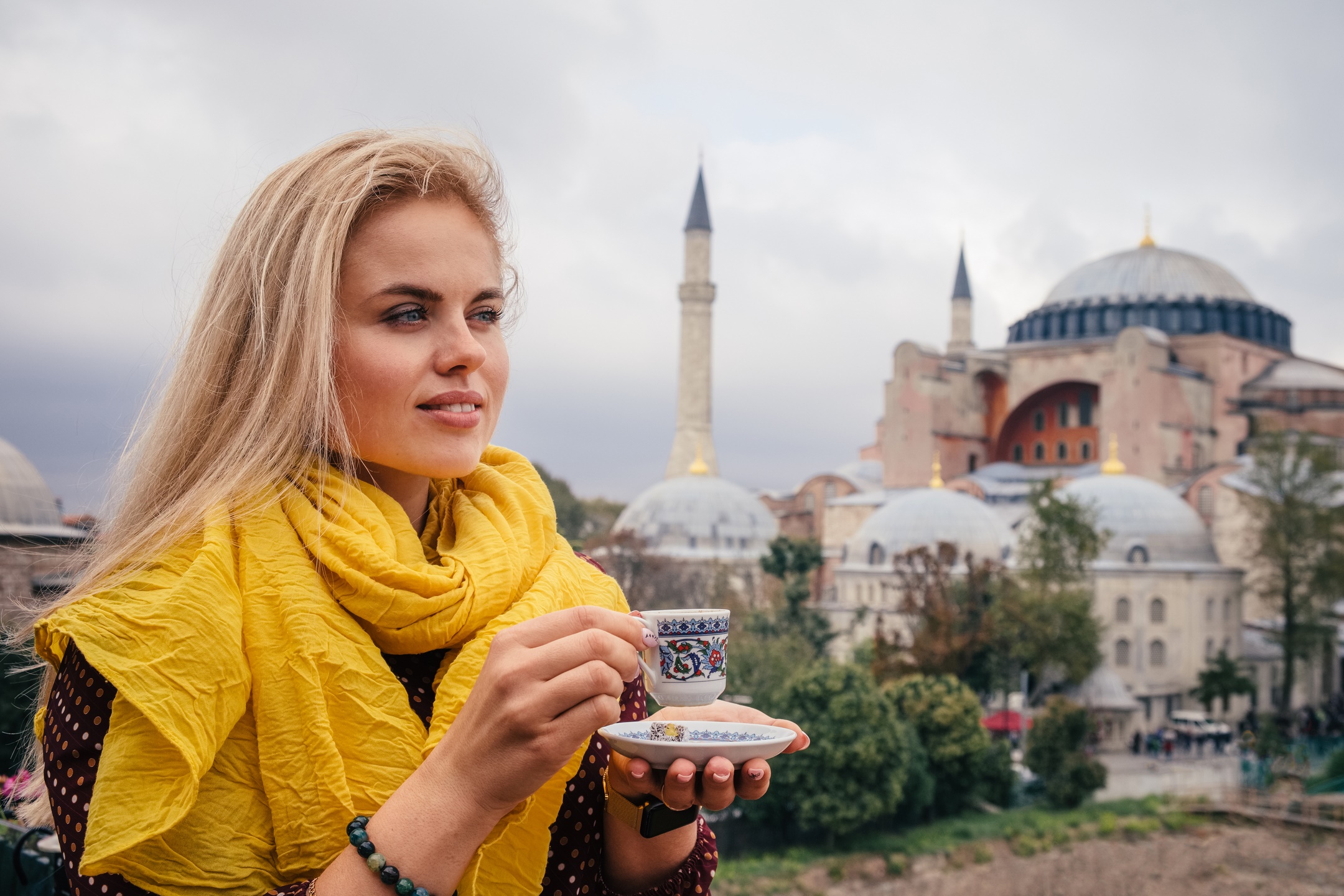Turkish Tea Culture
Did you know that Turkey is the world’s fifth largest tea producer? And that Turks have the highest per capita consumption of tea? Anyone not familiar with the country of Turkey may assume coffee is the national drink but this could not be more wrong. The Turks love drinking tea from sunrise to sunset and there is never a bad time to drink it in Turkey. The practice is firmly ingrained in the culture as a social experience and a sign of hospitality, ensuring the Turks even beat the Brits when assessing daily consumption.
It is hard to imagine breakfasts, social gatherings, business meetings, negotiations for carpets in the Grand Bazaar, or ferry rides across the Bosphorus in Turkey without the presence of tea. With tea servers in streets, shopping malls, and parks shouting, “ÇAY!” (chai) the beverage is always within shouting distance. It is fundamental to Turkish social life and plays a large role in Turkey’s domestic economy.
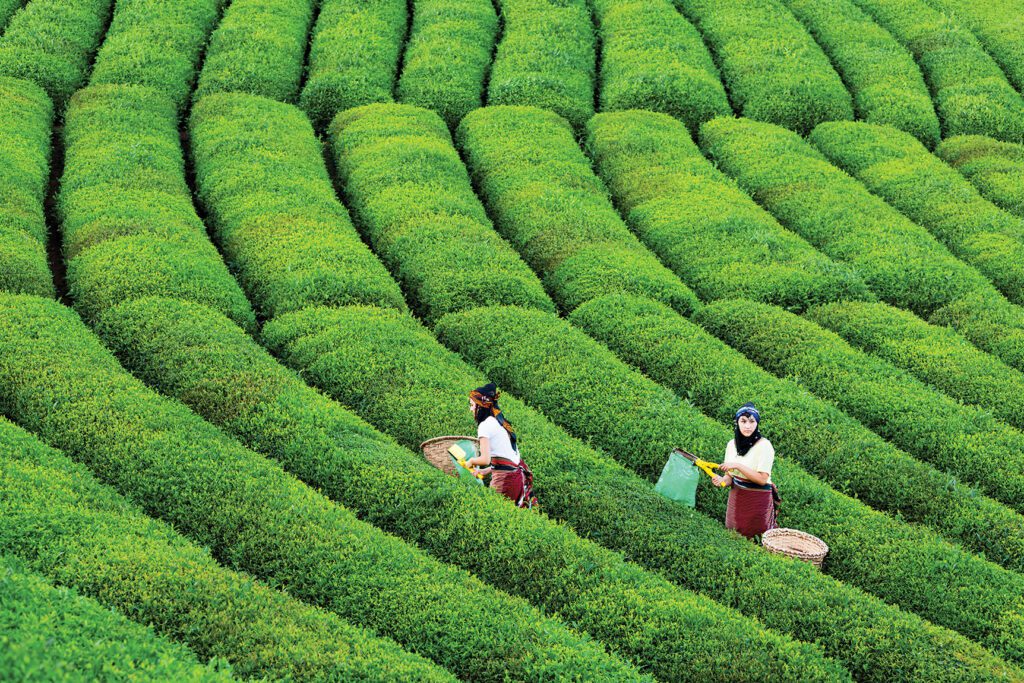
The History of Turkish Tea
Tea is believed to have originally ended up in Turkey in the 1500s, thanks to the heavily traveled Silk Road trade route, but the caffeinated beverage didn’t pick up in popularity until the late 1800s and didn’t truly take hold of the country until the mid-20th century.
Discover your perfect Turkey vacation package using our convenient search and filter options, tailor-making a journey that captures Turkey’s unique beauty and rich heritage just for you.
In 1878, Mehmet Izzet, the governor of the Turkish town of Adana, wrote the “Tea Pamphlet” (“Çay Rişalesi”) highlighting the countless health benefits of tea consumption, and tea houses began popping up across the country and throughout Istanbul. Unfortunately, tea consumption was still far less popular than coffee, which had been the beverage of choice in the country for centuries.
In 1917, the first attempts were made to plant and grow tea in Turkey, but because of the Turkish War of Independence, the efforts failed. In 1924, the independent government passed a law calling for tea, oranges, and filberts to be grown in the Black Sea region of Rize, but serious tea cultivation didn’t start until 1937 when 20 tons of tea seeds were imported from Batum in the Georgian Republic. The seeds were planted along the sloping hills of Rize, and 30 kilos of tea were produced. The region features high temperatures and a nice distribution of yearly rainfall, making the humid climate ideal for growing tea. Likewise, according to Linda Gaylard in The Tea Book, the region’s cool nights allow for tea to grow without the use of pesticides.
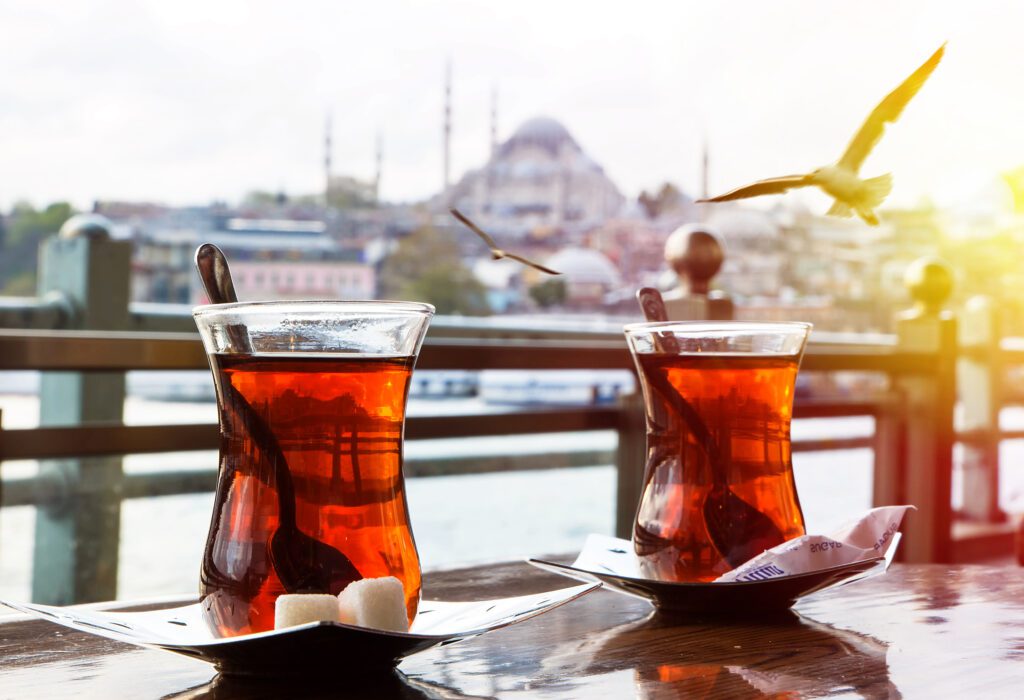
After World War I, coffee exports became expensive and tea became much cheaper than coffee, with four glasses of tea costing the equivalent of one cup of Turkish coffee. At last, in 1947, the first tea factory was founded and, by the 1960s, the tea efforts were so successful that Turkey began exporting its tea and towns took on tea-inspired names: Mapavri became Çayeli and Kadahor became Çaykara.
Once an economically poor region, today Rize’s tea production has risen to the levels of Sri Lanka and boosted the local economy immensely. Producing 4.6 percent of the world’s tea, an amazing 95 percent of the country’s tea stays in the country. This is thanks to a 145 percent tariff on any tea imported to Turkey, leaving the locals with a need for Rize’s black tea.
Turkey is also known for being one of the few countries outside of Italy to grow Bergamot Citrus, an essential ingredient in the ever-popular Earl Grey tea.
Tea in Turkish Social Life
On most busy streets, there is a familiar sight. A young boy carrying a silver tray hurries through the crowd to deliver small tulip shaped glasses filled with black tea. The fragrant liquid is not traditionally drunk with milk or lemon, only sugar cubes and sometimes than enough to make a very sweet drink. Shopkeepers often offer customers a Turkish tea, as a sign of friendship and hospitality. Any holidaymakers browsing through shops only have to say “yes” when being offered the tea and they immediately gain a glimpse into one of Turkey’s strong traditions.
Today, Turks have one of the highest per capita consumption rates of tea, averaging about 1,000 cups per year. This high rate owes itself to the availability of places to consume tea, social customs and traditions, and domestic production along the Eastern Black Sea coast.
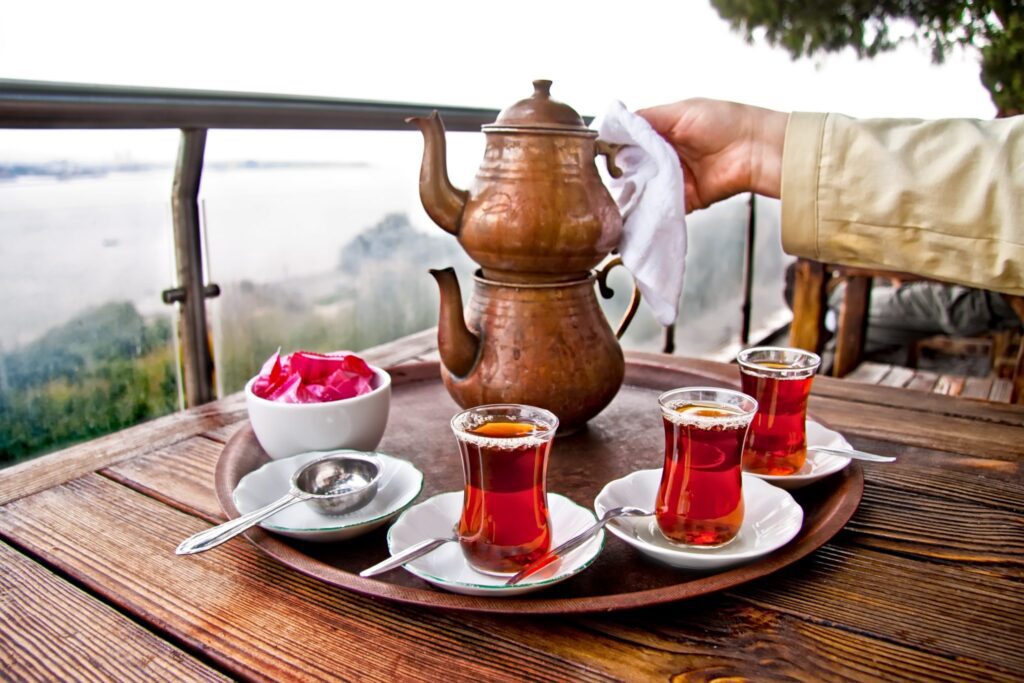
Travel to any town in Turkey and you are sure to find a tea house or a tea garden. In smaller towns and rural areas, tea houses are the preferred social hub where news and gossip are exchanged. In the larger cities and touristic regions, tea houses welcome the young and old, as well as many foreigners. Tea gardens, another social venue for drinking tea, gained popularity in the 1950s, especially in Istanbul, and were the place where families went for their social outings. It is important to note that the Turkish tea garden is very different from a Japanese tea garden. Whereas the latter is quiet and serene and was developed in conjunction with the Japanese tea ceremony, Turkish tea gardens are hubs of social activity with kids running around, music playing, and lively conversation among various groups from students, to businessmen to retirees and foreigners.
Tea is at the nexus of many social events in Turkey. In rural areas the gelin hamami (bridal shower in a Turkish bath) features samovars of tea and pastries for the bride and her friends. The cay saati (tea time) is so important there are more than ten cookbooks devoted to the subject of sweet and savory pastries and light fare that can be served at this time of day.
Turkish tea vs. Turkish coffee
Since teas and coffees are two different groups, it is not fair to compare them. They are not rivals and we mostly think that they are brother and sister. Probably this is because we like both of them. They are two dominant figures in Turkish culture.Turkish tea is consumed more frequently compared to Turkish coffee. So, going back to the title, this is the Number 1 hot beverage in Turkey. In addition, tea is irreplaceable and if we take this out of Turkish culture, this would be a thing that can not be easily replaced. In summary, this is a routine. Turkish coffee is more linked to history, hospitality, and not a routine as much as tea and probably consumed less than tea. We can say that a person generally drinks one cup of Turkish coffee in a day, but 2-3 cups of Turkish tea. On the other hand, usually, younger people do not prefer Turkish coffee too much. They prefer tea or other coffees like filter coffee and others.
Preparation and Serving
Turks prepare tea using a double tea pot. Turkish teaware is unique, and the vessel for preparation is a sight in and of itself. Almost a more simplistic form of the samovar, the Turkish çaydanlık is two teapots that are stacked one on top of the other. The lower teapot boils the water and the upper teapot is used to keep the infused tea concentrate warm. Water is boiled in the lower (larger) pot and the loose-leaf tea is steeped in the top (smaller) pot. This method allows each person to drink the tea as they desire: strong and steeped, or light with lots of water added. In central Anatolian towns such as Amasya, and in Eastern Turkey, tea is prepared in a samovar. Several scoops of loose leaf tea are placed into the upper teapot, while the lower teapot is filled with water and brought to a boil. Once the water is boiling, a small amount of the water is placed into the upper pot and the tea leaves are allowed to infuse for 10–15 minutes or more, creating a strong tea concentrate.

To serve, the host or hostess will ask each guest which type of tea they prefer, and serving the wrong style is considered a huge faux pas. The styles of Turkish tea are
- koyu: meaning “dark,” this is a strong style of tea
- tavşan kanı: meaning “rabbit’s blood,” this is a deep brownish red style of tea
- açık: meaning “light,” this is a weak style of tea
Turks prefer to drink tea in small tulip-shaped glasses. 400 million of these glasses, nearly six per person, are sold each year in Turkey. Though the origins of this shape are not known, the clear glass allows the drinker to appreciate the crimson color of the tea. Small glasses are generally preferred for Turkish tea. Due to the reduction of the area on the mid-portion, they are often called thin/slim waist. People love this type since it shows tea’s color due to being glass and transparent and it allows it to be consumed hot enough. Most Turkish people don’t like to drink tea with plastic and cartoon cups. The main reason for this is to cool down the tea and not showing the color of the tea. However, using bigger glass cups is getting more popular among young people and white collars since it is more practical and prevents spending time to re-fill the glass. The tea glass is so important in Turkish life it is used as a measurement in recipes. As you pass tea gardens and tea houses you will hear the clinking of tiny tea spoons in the tea glasses. In large cities like Istanbul, and the capital Ankara, tea may be served in porcelain cups and mugs as in England and the United States, but the small tea-glass is by far the container of choice.
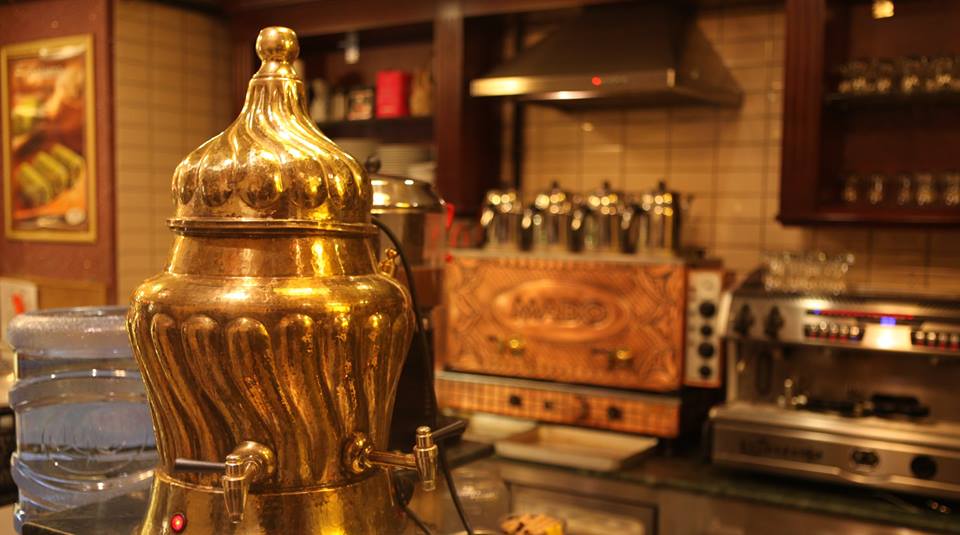
Generally, two small sugar cubes will accompany tea that is served in public. In Erzurum and other towns in Eastern Turkey, tea is taken in the kitlama style, where a lump of sugar is placed between the tongue and cheek. Turks never add milk to their tea; sometimes lemon may be preferred.Like the English, Turkey’s tea drinkers also have a favorite tea time. Falling between 3 and 5 p.m., Turkish tea time (çay saati) features plenty cakes, cookies, baklava, and, of course, tuzlular, or “salties,” which are salty cookies and biscuits. If you travel to Turkey, be prepared for plenty of tea, because the average local drinks up to 10 cups a day.
Difference between green tea and black tea:
- Green and black tea plants are exactly the same. Processes are different after harvesting.
- Green tea is not enzymatically oxidized, however, black tea is. This oxidation makes Turkish tea black. Phenolic compounds in tea oxidized with oxygen, and this reaction is catalyzed by polyphenol oxidase enzyme and this enzymatic color reaction gives black color.
- Even green tea is brewed at 70-80 C (~160-180 F) around 3-5 minutes, Turkish tea should be brewed with boiled water for around 20 minutes. This is necessary to get its optimum taste.
- This long steeping process makes Turkish tea delicious. You know, this taste makes Turkish tea different.
- Unlike English and similar teas, milk, etc. are not added. It is consumed as plain and hot.
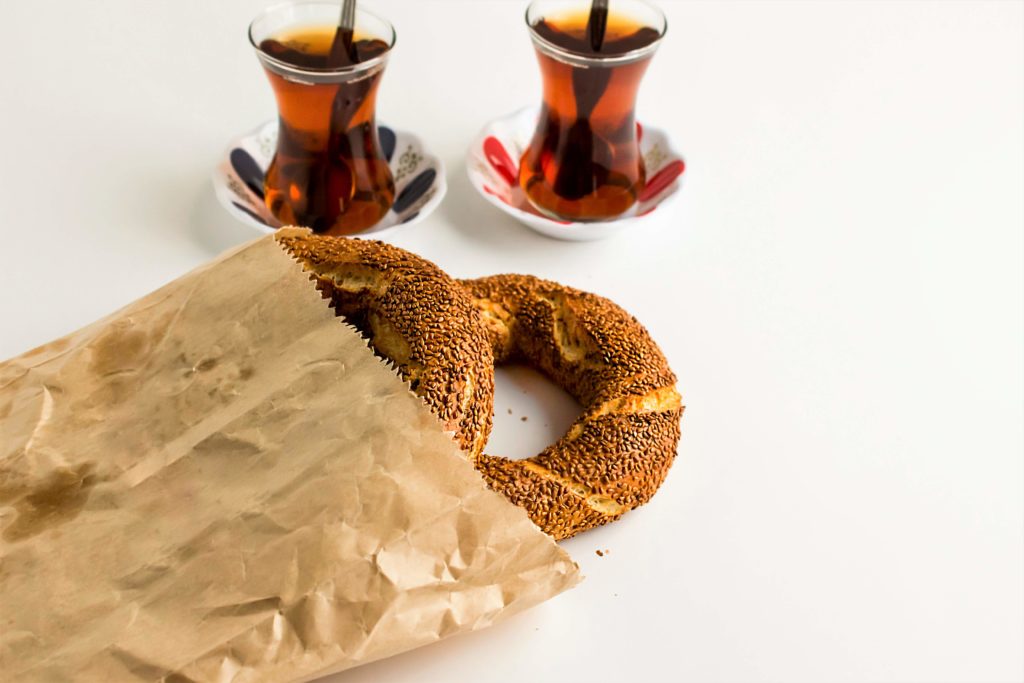
How to make Turkish tea?
Steps are almost identical machines or manual pots. Here is the recipe for Turkish tea.
- Step 1: Boil your water and try to consume/use soft water. The quality of water is important and will affect the taste of water.
- Pour the water into the big pot (until the holes).
- And boil the water.
- Step 2: Add the boiled water to the small pot until filling till the level of holes.
- One suggestion here… Add the water first and then put the tea. If you make vice versa, it would burn the Turkish tea which is not good.
- Step 3: Put the tea powder into the small pot which contains boiled water.
- Two people, 2 spoon tea powder or 2 tea bags (Approximately, 4-6 small glass)
- Four people, 3 spoon tea powder or 3 tea bags (Approximately, 10-12 small glass)
- Six people, 5 spoon tea powder or 4 tea bags (Approximately, 15-18 small glass)
- Then make sure put the small pot on the big pot
- Note: If you like Earl Grey, you can consider mixing normal tea and Earl Grey 50%-50% since Early Grey has a very dominant taste.
- Step 4: Add some extra water to the bigger pot and boiled again. The water should be less than the holes. After boiling, decrease to low heat.
- You are about to be ready. But one more step is needed.
- Step 5: Be patient and wait! Allow it to steep for 20 minutes min. or 30 minutes for a better taste. Don’t turn off your tea maker or heater. And, you can keep it open till the last glass. It can be around 1-2 hours and after this period, its taste will not be good.
Where to buy best tea glass set?
We use the brands below at our homes, so you can feel comfortable and will be pleased if you buy them. These brands are very popular in Turkey as well.
Are the pots for Turkish tea different from other pots?
The difference is these pots for Turkish tea consist of two parts (pots). 1st pot (relatively smaller): This is the small one for brewing tea. Tea is put into this small pot and boiled water is added to it. 2nd pot (relatively bigger): This is the big pot to boil water. Intensive tea is diluted by this boiled water. Once the tea is ready, a mix is prepared by a ratio of Turkish tea and this boiled water.
Which Turkish tea brand is the best?
Things to consider:
- Do not buy non-packaged teas. Actually, don’t buy anything w/o package. Because, we never know how these are produced, how these are stored, or whether the product is produced correctly.
- If you want a real Turkish tea, look at the designation of origin. Some products are exported from Arabic countries and their taste is different.
Recommended Turkish tea brands:
Turkish Tea Gardens
Also popular in the country are Turkish tea gardens, which began popping up in the 1950s and aren’t always a “garden” in the traditional sense. In fact, unlike the serenity and reflection of Japanese tea gardens, Turkish tea gardens are loud and lively with music, conversation, and, sometimes, even hookah.
Where to drink tea in Istanbul?
You can find good Turkish tea all around Istanbul and there are also good tea gardens. Here is a shortlist.
- Tarihi Cinaralti Cay Bahcesi, Çengelköy
- Çaykovski – Şişli
- Dem Karaköy
- Moda Aile Çay Bahçesi
- Pierre Loti, Eyüp
- Molla Aşkı Teras kafe, Ayvansaray
- Güzelcehisar Cafe , Beykoz
- Mecidiye Pavilion Café
- Firuzağa Kahvesi , Cihangir
Tea Production
Turkey’s serious attempts at cultivating tea began in 1917 in the Eastern Black Sea town of Rize. However, due the Turkish War for Independence, it was difficult for the Government-appointed agricultural engineers to gain the residents’ support, which was critical to the endeavor’s success. In 1924 the Government passed a law stating that tea, oranges, and filberts would be raised in Rize. However, it was not until the mid- to late-1930s that the Government placed a strong emphasis on cultivating tea. The first large scale cultivation occurred in 1937 when 20 tons of seeds were brought from Batum in the Georgian Republic, and planted at the central green house in Rize, yielding 30 kilos of tea. Tea cultivation began to spread and become an inextricable part of economic life along the Eastern Black Sea Coast, so much so that towns began to change their names to have the word “Çay” in them: the town of Mapavri became Çayeli and Kadahor became Çaykara. By 1965, the production of tea had satisfied the domestic market and Turkey began to export its tea.
Çay-Kur, the Directorate of Tea Establishments was founded in 1971 to coordinate both the cultivation and processing of tea, and in 1973 it went into active operation. Çay-Kur aimed to expand tea cultivation, stay abreast of innovations in tea processing technology, and import and export tea as necessary. Çay-Kur enjoyed a monopoly over Turkish tea until 1984, when tea processing and packaging were opened to private enterprise. Today, Cay-Kur still commands 60% of the domestic sales of tea.
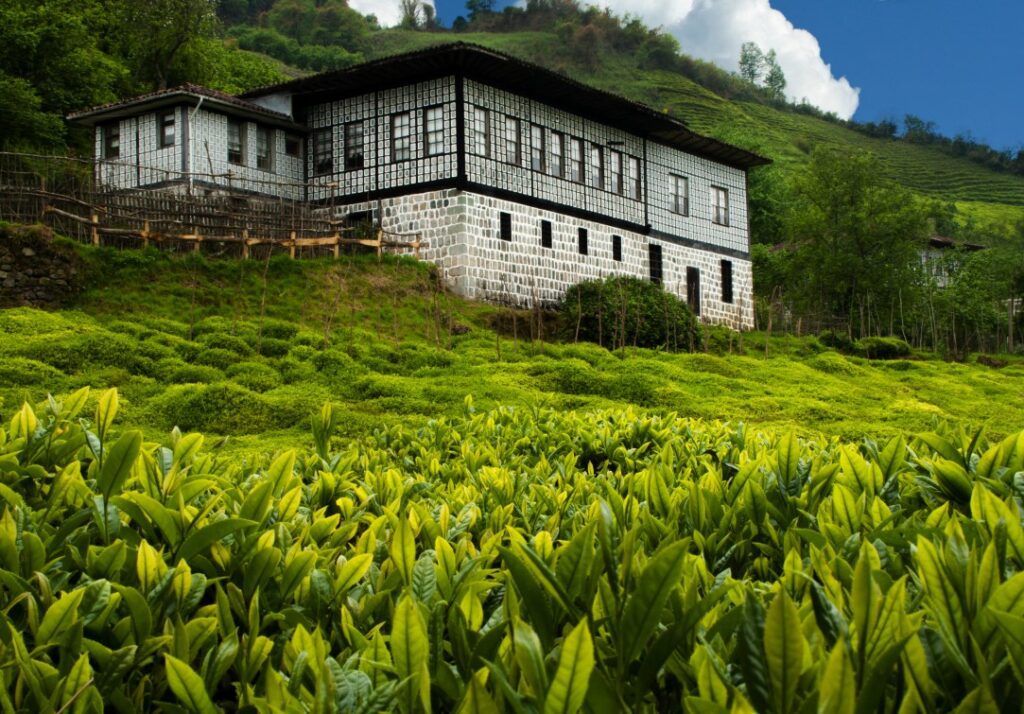
Turkey is the world’s sixth largest producer of tea, trailing India, China, Kenya, Sri Lanka, and Indonesia. Along Turkey’s Eastern Black Sea Coast tea bushes stretch from the border with the Georgian Republic to the town of Rize, Turkey’s ‘tea capital’, and extend farther westward toward Trabzon. Over 200,000 families are involved in the cultivation of tea either as owners of tea “plantations”, sharecroppers, or employees in the nearly 300 tea producing factories.
All tea is produced from the same plant, Camellia Sinensis; it is the amount of fermentation that determines whether the tea turns out to be black, oolong (semi-fermented) or green (unfermented). A unique feature of Turkish tea is that no chemical substances or additives are used in the production process.





